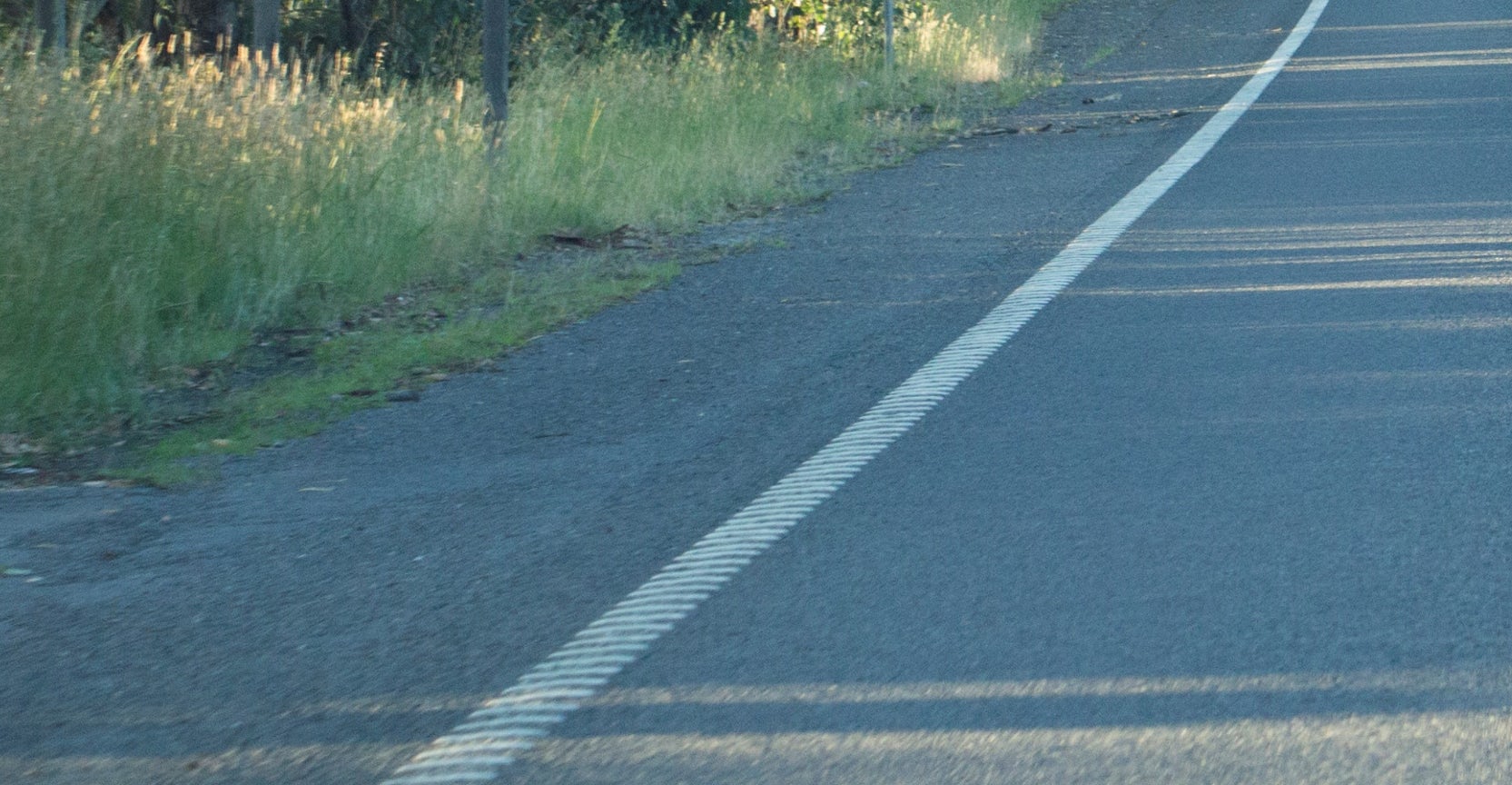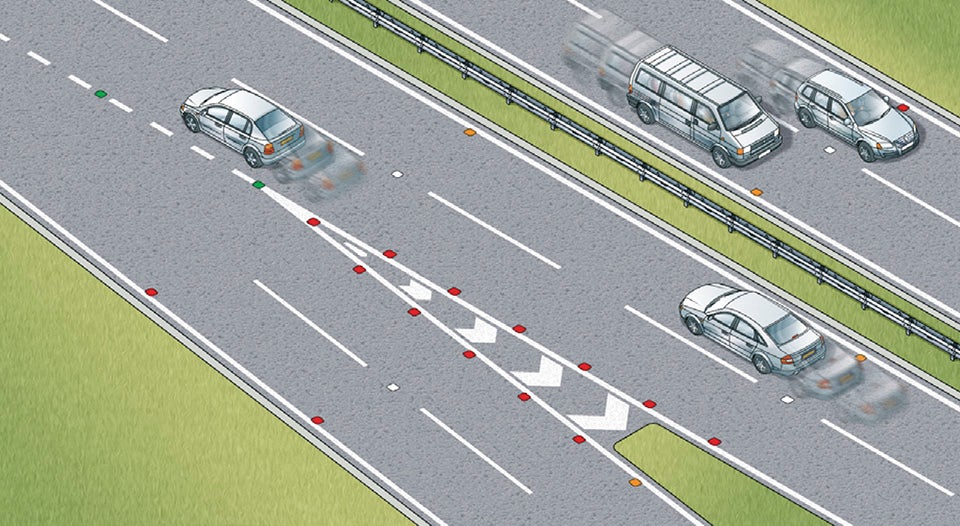
Road and lane markings such as lines and symbols are used to divide lanes, as well as indicate when it's legal to pass, change lanes, turn, and when you have to stop.
Lane dividers
These are short, broken white lines which are used on wide carriageways to divide them into lanes. The different combinations are explained below.
A broken white line

This marks the centre of the road. When this line lengthens and the gaps shorten, it means that there is a hazard ahead. Do not cross it unless you can see the road is clear and wish to overtake or turn off.
A solid white line

You are not allowed to cross or pass a solid white line, unless for access or in an emergency. Do not overtake across the solid white line.
Double dividing lines

There are 2 scenarios:
- Double white lines where the line nearest to you is broken - means you may cross the lines to overtake if it is safe, provided you can complete the manoeuvre before reaching a solid white line on your side. White direction arrows on the road indicate that you need to get back onto your side of the road.
- Double white lines where the line nearest you is solid - means you MUST NOT cross or straddle it unless it is safe and you need to enter adjoining premises or a side road. You may cross the line if necessary, provided the road is clear, to pass a stationary vehicle, or overtake a pedal cycle, horse or road maintenance vehicle, if they are travelling at 10 mph (16 km/h) or less.
Edge lines

Edge lines serve the purpose of keeping traffic off soft road edges and breakdown lanes. They also make it easier to see how to position your car (by using the edge line as direction) and help you see where you are going. The area left of the edge line is called a road shoulder.
Some edge lines are painted in a way that creates vibration or noise when driven on to warn drivers that veer over the line. They are called “rumble devices”.
Arrows

You must only drive in the direction indicated by the arrows, if marked arrows exist. When turning, you should stay in the same lane as you move from one road to the other.
Arrows may have more than one direction - one direction restricts you to only going that direction while two directions mean that you may go either direction.
Reflective road studs

Reflective road studs may be used with white lines.
- White studs mark the lanes or the middle of the road.
- Red studs mark the left edge of the road.
- Amber studs mark the central reservation of a dual carriageway or motorway.
- Green studs mark the edge of the main carriageway at lay-bys and slip roads.
- Green/yellow studs indicate temporary adjustments to lane layouts, e.g. where road works are taking place.
